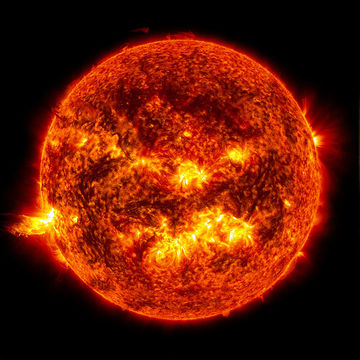
The Sun: The Main Source of Energy for the Solar System
The solar system, a mesmerizing expanse of celestial bodies that includes planets, moons, asteroids, and comets, derives its primary source of energy from one luminous and colossal entity: the Sun. Located at the heart of our solar system, the Sun is a blazing ball of gas that radiates immense amounts of energy, providing the necessary light and heat that sustains life and drives the dynamic processes observed throughout the solar system. In this extensive article, we will explore the Sun’s pivotal role as the main source of energy for our celestial neighborhood, discussing its composition, energy generation, and the profound influence it exerts on all the bodies that orbit it.
The Sun’s Composition
To comprehend the Sun’s role as the central energy source of the solar system, we must first delve into its composition and structure. The Sun is primarily composed of hydrogen (about 74%) and helium (approximately 24%). Trace amounts of heavier elements, such as carbon, oxygen, and nitrogen, along with other elements, make up the remaining 2%. This simple composition belies the complex processes happening within.
Energy Generation in the Sun
The Sun’s prodigious energy output results from the process of nuclear fusion that takes place within its core. This process, specifically termed hydrogen fusion or stellar nucleosynthesis, is the very engine of the Sun’s energy production. Here’s a simplified overview of how it works:
- Hydrogen Fusion: The Sun’s core, where temperatures exceed 15 million degrees Celsius (27 million degrees Fahrenheit), provides the perfect environment for hydrogen atoms to undergo fusion. In this process, hydrogen nuclei (protons) collide and fuse together, forming helium nuclei. This fusion releases an extraordinary amount of energy in the form of light and heat.
- Energy Transport: The energy generated in the core takes millions of years to traverse the Sun’s radiative and convective zones, eventually reaching the surface. The energy is transported through a combination of radiation (photons) and convection (the movement of hot gas).
- Radiation: In the Sun’s core, where temperatures are highest, energy is primarily transported through radiation. Photons produced in the core bounce from atom to atom in a random walk, gradually making their way to the Sun’s surface.
- Convection: In the outer layers of the Sun, where temperatures drop, energy is transported through convection. Hot plasma rises from the core, releases energy at the surface, cools, and then descends back into the interior to be reheated in a continuous cycle.
The Sun’s Energy Output
The Sun’s energy output is truly staggering. It radiates energy across the electromagnetic spectrum, including visible light, ultraviolet radiation, and infrared radiation. The total energy output of the Sun is estimated at approximately 3.8 x 10^26 joules per second, equivalent to the energy generated by about 100 billion nuclear bombs exploding every second.
Effects of Solar Energy on the Solar System
The Sun’s energy is the lifeblood of the solar system, and its influence is pervasive:
1. Planetary Orbits and Gravitational Balance
The Sun’s gravitational force keeps all the planets and other objects in the solar system in their orbits. Without the Sun’s gravitational pull, the planets would drift aimlessly through space.
2. Light and Heat for Life
The Sun’s energy, delivered in the form of sunlight, is essential for life on Earth. It provides the energy required for photosynthesis in plants, which is the foundation of the food chain. Solar heat, meanwhile, regulates Earth’s temperature and climate.
3. Space Weather and Magnetospheres
The Sun’s activity, such as solar flares and coronal mass ejections, affects the magnetospheres and atmospheres of planets and moons. This can disrupt communication systems and create spectacular auroras.
4. Planetary Geology
The Sun’s heat plays a crucial role in the geological processes of planets and moons. It powers weather systems, drives winds, and influences the behavior of gases in planetary atmospheres.
5. Energy for Exploration
Space probes and spacecraft sent to explore the solar system rely on solar panels to convert sunlight into electrical energy, enabling them to operate in the vacuum of space.
Conclusion
The Sun, a dazzling sphere of nuclear fusion and radiant energy, stands as the unequivocal main source of energy for the solar system. Its immense power shapes the orbits of celestial bodies, drives the processes that sustain life, and plays a pivotal role in the dynamic and awe-inspiring interactions observed throughout the cosmos. Understanding the Sun’s role as the ultimate celestial powerhouse deepens our appreciation for the intricate interplay of forces and phenomena that define our solar system.
